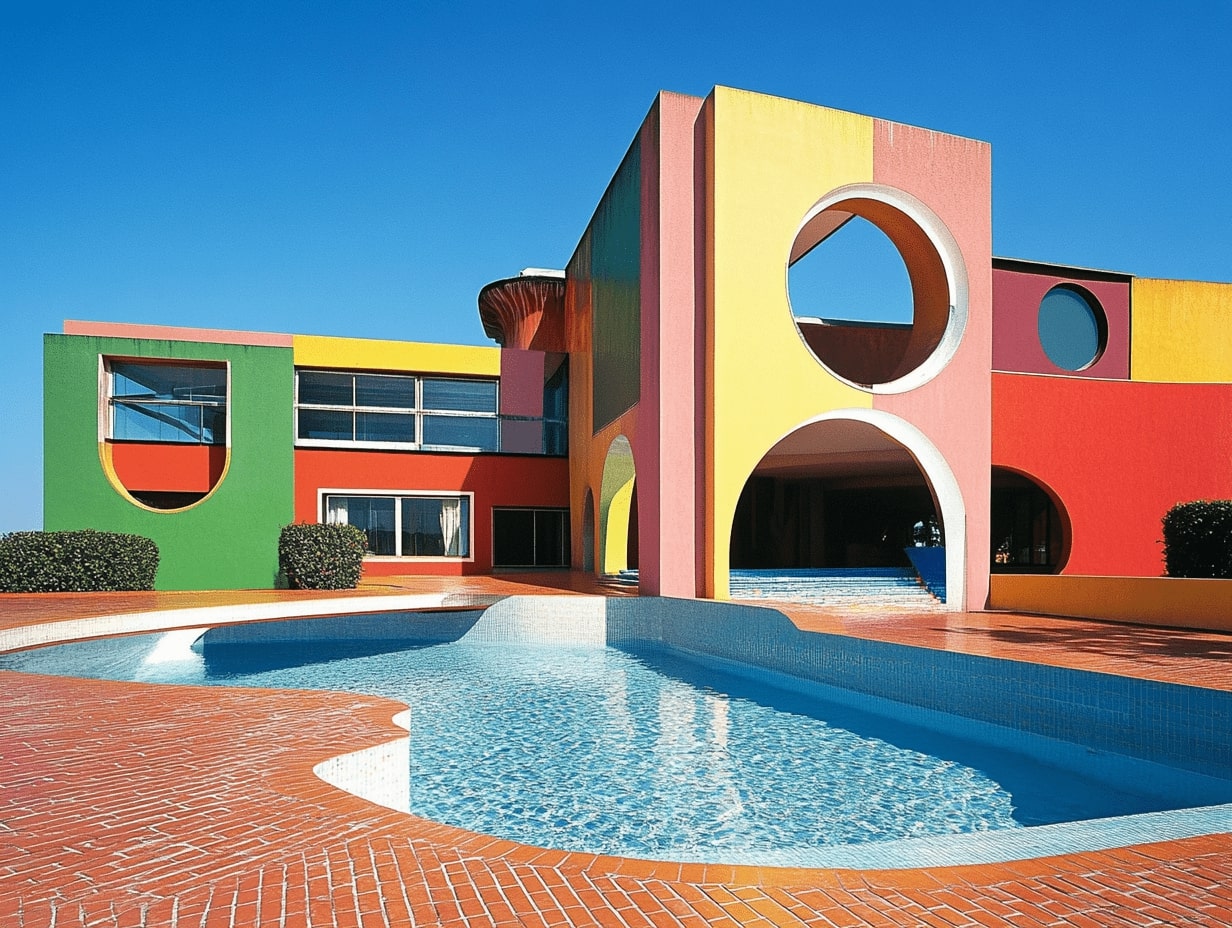- Home
- Articles
- Architectural Portfolio
- Architectral Presentation
- Inspirational Stories
- Architecture News
- Visualization
- BIM Industry
- Facade Design
- Parametric Design
- Career
- Landscape Architecture
- Construction
- Artificial Intelligence
- Sketching
- Design Softwares
- Diagrams
- Writing
- Architectural Tips
- Sustainability
- Courses
- Concept
- Technology
- History & Heritage
- Future of Architecture
- Guides & How-To
- Projects
- Interior Design
- Competitions
- Jobs
- Store
- Tools
- More
- Home
- Articles
- Architectural Portfolio
- Architectral Presentation
- Inspirational Stories
- Architecture News
- Visualization
- BIM Industry
- Facade Design
- Parametric Design
- Career
- Landscape Architecture
- Construction
- Artificial Intelligence
- Sketching
- Design Softwares
- Diagrams
- Writing
- Architectural Tips
- Sustainability
- Courses
- Concept
- Technology
- History & Heritage
- Future of Architecture
- Guides & How-To
- Projects
- Interior Design
- Competitions
- Jobs
- Store
- Tools
- More
Postmodernism vs Modernism Architecture: Key Differences and Their Lasting Impact
Explore the contrasts between modernism and postmodernism in architecture, from the simplicity and functionality of modernism to the eclecticism and cultural expression of postmodernism. Learn how these movements shaped designs, materials, and societal influences, and how their interplay continues to inspire contemporary architectural innovation.

Architecture tells the story of humanity, reflecting our values, aspirations, and creativity. When we look at modernism and postmodernism, we see two distinct chapters in this narrative, each with its own philosophy and aesthetic. Modernism thrives on simplicity, functionality, and the belief that form follows function. Its clean lines and minimalism aim to create order in an ever-changing world.
Postmodernism, however, challenges this rigidity. It embraces complexity, playfulness, and a mix of styles, often weaving history and culture into its designs. Where modernism seeks uniformity, postmodernism celebrates individuality and unpredictability. These contrasting approaches have shaped the skylines and spaces we inhabit today, leaving us to wonder—what do these styles say about us and the times we live in?

Table of Contents
ToggleUnderstanding Modernism Architecture
Modernism architecture emerged during the early 20th century, focusing on simplicity and functionality. This movement aimed to reject historical styles, embracing new technologies and materials to reflect progress.

Key Characteristics Of Modernism
Modernism prioritizes minimalism, featuring clean lines, geometric forms, and open spaces. Designs avoid ornamentation, using materials like steel, glass, and reinforced concrete to create structural clarity. Functionality and efficiency are central, aligning form with purpose. For example, buildings like the Villa Savoye by Le Corbusier epitomize these principles with their sleek, utilitarian designs.
Historical Context And Origins
Modernism architecture developed during a period of rapid societal and technological change, influenced by the industrial revolution and World War I. Movements like the Bauhaus and International Style shaped this era, seeking to redefine architecture as functional art. Architects embraced mass production and new construction methods to address urbanization challenges. This break from traditional ornamentation fostered a design philosophy rooted in innovation.
Prominent Examples Of Modernism Architecture
Notable modernist structures include the Barcelona Pavilion by Ludwig Mies van der Rohe and Fallingwater by Frank Lloyd Wright. These buildings showcase the integration of natural landscapes, open layouts, and innovative use of materials. Skyscrapers like New York’s Seagram Building highlight how modernism extended its influence into urban environments worldwide. Such works demonstrate modernism’s enduring impact on architectural practice.
Unpacking Postmodernism Architecture
Postmodernism architecture emerged in the mid-20th century, reacting to the rigidity and uniformity of modernism. It celebrates diversity, ornamentation, and playful reinterpretation of historical elements.

Defining Postmodernism And Its Features
Postmodernism prioritizes eclecticism and individuality in architectural design. It often combines traditional motifs with contemporary practices, creating a blend of styles that challenge conventional norms. Features include ornamental façades, vibrant colors, and asymmetrical designs. Architects use materials like glass, steel, brick, and stucco to create engaging contrasts. Symbolism and irony also play central roles, with buildings frequently embedding cultural references.
How Postmodernism Challenges Modernism
Postmodernism rejects modernism’s focus on minimalism and universality. Instead of adhering to functionalist principles, postmodern architects explore aesthetic complexity and symbolic meaning. By embracing fragmentation and playful elements, it critiques the uniformity and impersonal qualities of modernist architecture. This approach fosters a deeper connection between architecture, cultural heritage, and individual identity.
Noteworthy Examples Of Postmodernism Architecture
Examples of postmodernism architecture showcase its bold experimental approach. The Piazza d’Italia in New Orleans, designed by Charles Moore, exemplifies its playful use of classical elements. The Portland Building by Michael Graves incorporates geometric forms with colorful ornamentation. Frank Gehry’s Dancing House in Prague highlights the movement’s embrace of fluidity and contrasts. These designs reflect postmodernism’s enduring emphasis on creativity, context, and diversity.
Core Differences: Postmodernism Vs Modernism Architecture
Modernism and postmodernism represent contrasting architectural paradigms, shaped by their design philosophies, material usage, and societal influences. We explore these distinctions below.

Design Philosophy And Aesthetic Values
Modernist architecture emphasizes functionality, order, and simplicity. It avoids unnecessary ornamentation, featuring clean lines, geometric shapes, and open layouts. Modernists pursue universal design principles aimed at achieving harmony and balance, prioritizing usability over decoration.
Postmodernism challenges this minimalism, advocating for eclecticism and individuality. Its designs incorporate historical references, decorative details, and aesthetic playfulness. Asymmetry, bright colors, and symbolic elements dominate, creating buildings that feel more personal and context-driven.
Use Of Materials And Technology
Modernist architects favor materials emblematic of the industrial age, such as steel, glass, and reinforced concrete. These materials enable innovative structural forms, like cantilevers and curtain walls, promoting transparency and space optimization.
Postmodernism blends traditional and modern materials, such as brick, stucco, glass, and steel. Architects create layered textures and contrasts, often emphasizing ornamental façades. This approach combines the practical benefits of contemporary technology with the charm of historical architecture.
Cultural And Social Implications
Modernism reflects a globalist and progressive outlook, influenced by industrialization and the quest for social reform. It seeks to embody rationality and equality, often presenting a unified architectural language regardless of location.
Postmodernism celebrates cultural diversity and individual expression. By embedding regional motifs and historical context, it resonates with local identities. This inclusivity fosters deeper connections between architecture, heritage, and societal values, rejecting the universality that modernism promotes.
Influence On Contemporary Architecture
Modernism and postmodernism continue to shape contemporary architecture, blending their distinct attributes to create innovative yet culturally rooted designs.

Integration Of Modernist And Postmodernist Elements
Contemporary architecture often merges modernism’s functional clarity with postmodernism’s expressive diversity. Buildings frequently feature clean geometric forms derived from modernist principles while incorporating ornamental details or localized symbolism characteristic of postmodernism. Materials like steel, glass, and concrete coexist with traditional brick, stucco, or wood to create dynamic contrasts. For example, Herzog & de Meuron’s Elbphilharmonie in Hamburg integrates modernist minimalism with a postmodern reinterpretation of classical concert hall forms, showcasing this hybrid approach.
Legacy And Impact On Architectural Styles
Modernism’s emphasis on innovation and function laid the foundation for contemporary sustainable design, while postmodernism’s focus on identity and culture inspires architects to prioritize context and storytelling. Eco-friendly practices, such as adaptive reuse or energy-efficient façades, reflect modernist efficiency. Simultaneously, architectural movements like deconstructivism, influenced by postmodernism, embrace fragmented forms and playful compositions, as seen in Zaha Hadid’s MAXXI Museum in Rome. Together, these movements ensure architectural styles remain responsive to cultural, environmental, and technological advancements.
Conclusion
Modernism and postmodernism represent contrasting yet interconnected approaches to architecture, each rooted in distinct cultural, technological, and historical contexts. By examining their principles, it’s clear that modernism emphasizes simplicity, functionality, and universal design, reflecting a desire for order and efficiency. Postmodernism, on the other hand, values diversity, individuality, and cultural expression, encouraging architects to explore symbolism and eclectic design elements.
These styles offer valuable insights into the evolution of architectural thought. Modernist structures like the Villa Savoye demonstrate how simplicity can convey elegance and clarity, while postmodern icons like the Portland Building reveal how ornamentation and context can create meaningful spaces. As architectural boundaries expand, the dialogue between these movements continues to shape innovative designs, blending practicality with narrative. Combining the strengths of modernism and postmodernism allows today’s architects to create buildings that are both functional and culturally resonant.
- architectural movements 20th century
- architectural style comparison
- architecture impact on society
- differences in architectural styles
- evolution of architectural styles
- famous modern architects
- famous postmodern architects
- history of modern architecture
- history of postmodern architecture
- impact of modernism on architecture
- impact of postmodernism on architecture
- influences on modern architecture
- influences on postmodern architecture
- key features of modern architecture
- key features of postmodern architecture
- Modern Architecture
- modernism architectural principles
- Postmodern Architecture
- postmodern architecture examples
- postmodern vs modern building design
- postmodernism architectural characteristics
- postmodernism vs modernism
Submit your architectural projects
Follow these steps for submission your project. Submission FormLatest Posts
Top 8 Luxury Vacation Rentals Features Guests Love Most
A luxury vacation rental offers an entirely different experience than a typical...
Why Local Expertise Matters: Choosing the Right Plumbers in Townsville
Why Local Expertise Matters: Choosing the Right Plumbers in Townsville When it...
Bathroom Remodel ROI: How to Add $15–30K to Your Home Value in 2025-2026
Outdated bathrooms can drag a listing 20-30% longer on the market. Buyers...
The Key Factors to Review When Comparing Fiber Providers in Minneapolis
Looking for a fiber provider in Minneapolis can feel surprisingly overwhelming. The...












Leave a comment